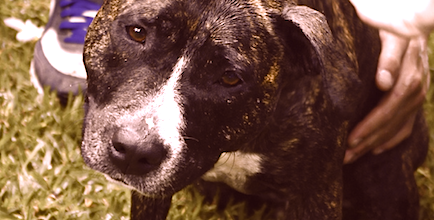How Strict Animal Shelter Policies Can Cause Pets to Suffer
Shelter policies are put in place to protect the animals, but sometimes they may hurt homeless pets more than they help them.

Animal shelter workers don’t choose their line of work for the money. Truthfully, there’s little money to be had. They also don’t get into the field for social recognition — it’s hard work that often goes unnoticed.
Shelter workers choose to work with animals because of a profound love of pets and a need to protect them. But sometimes this love may hold a pet back from getting placed in a good home if the workers’ expectations of adopters are too high.

Don’t leave your pet’s safety to chance
Sign up for Petful recall alerts today.

When Protecting Pets Is Harmful
Even though a love for pets draws shelter workers to animal refuges, staff members are ultimately exposed to more abused and neglected pets than are most other animal lovers.
The level of cruelty toward animals that workers witness can have serious, overwhelming effects on their lives, including:
- Depression
- Compassion fatigue
- Suicide
Pet care professionals use the same passion that drives them to work in such a volatile environment to protect the homeless animals in their care from ending up in neglectful situations again. Even with the best intentions, sometimes that fierce protection can actually be destructive.
Strict Shelter Policies
A love for every pet who comes into the shelter seems like a positive thing for rescue workers to have, but that deep affection may leave them feeling like no adopter is good enough.
The qualities needed in the “perfect adopter” become almost impossible to find. Instead of getting a new home, shelter pets end up waiting for a fairy-tale ending indefinitely in cold cages.

When I began working with homeless pets, my primary interest was to get them into good homes. As time passed, though, I became suspicious of everyone who walked through our doors.
Soon, good homes weren’t enough. They had to be better — they had to be perfect.
Relying on the strict shelter policies, I rejected adopters who should have been given a chance. I rejected them because:
- They had intact pets at home. It was shelter policy that all pre-existing pets had to be spayed or neutered before adoption. Some some people didn’t know the health and behavior benefits to sterilizing their pets, so they’d never done it.
- Their current pets were overdue on vaccinations. If an adopter’s pet was 1 or 2 years overdue on a rabies vaccine, we could reject the adoption on the grounds that the person wasn’t providing regular medical attention.
- They wanted an outdoor cat. There are plenty of reasons why having an outdoor cat is not ideal. Let’s be honest, though — some cats prefer to be outside. When there is about a 50/50 chance that the cat will be euthanized in the shelter, a life outdoors is preferable to death.
This Sacremento SPCA shelter worker gives us a little insight into her job:

The Cost
Shelter workers may begin looking for reasons to reject anyone who doesn’t immediately strike them as the perfect candidate to adopt a pet.
They use shelter policies as a figurative shield to protect vulnerable pets from an imperfect home. But those policies end up being used also as the figurative sword that can ruin shelter pets. As more and more adopters are turned away, shelter pets suffer and sometimes die because of it.
Possible Solutions
Solving this problem means being more realistic about approving adopters.
From my own experience, it can be painful to make exceptions and allow someone who doesn’t meet every ideal qualification to adopt a beloved shelter pet. But to ensure a higher placement rate, a lower euthanasia rate and an overall decrease in depression (among pets and workers), we must exercise some flexibility.
Adopters shouldn’t be rejected just because they:
- Rent instead of own a home
- Work an 8-hour day
- Don’t make $100,000-plus per year
- Don’t have a fenced-in yard
- Have no previous pet experience
In some cases, shelter policies should be reviewed and updated. Staff members should meet regularly to discuss how to handle each case and be encouraged to bring adoption questions to managers.
Sometimes, taking a break is the best option. Working in a shelter is emotional and it becomes difficult to leave, even for a short time. But taking a relaxing vacation may be the very thing needed to refresh oneself.
It’s important for rescue workers to remember why they took the job and to stay focused on not only protecting shelter pets but also saving them through finding new homes. Not every adoption is perfect and not every adopter is flawless, but a good home is better than no home.







